Archaeologists conducting excavations in Berlin's historic Molkenmarkt area discovered an authentic 17th-century Japanese wakizashi, a type of short sword used by samurai in feudal Japan.
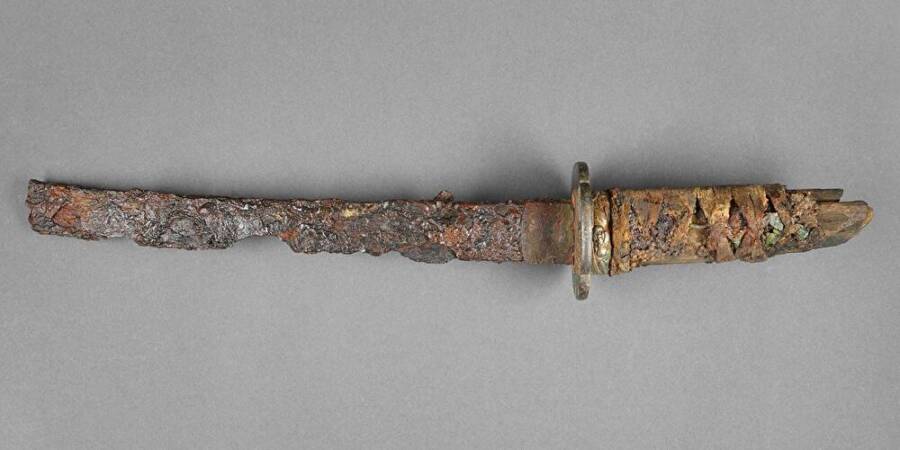
Anica Kelp/State Museums of BerlinThis Japanese sword was discovered in a cellar in Berlin, but nobody is sure how it got there.
In the winter of 2022, researchers from the Berlin State Office for Monument Preservation uncovered several cellars beneath the streets of Berlin. During subsequent excavations, they found something unexpected: an authentic 17th-century Japanese short sword.
The weapon was taken to the city’s Museum of Prehistory and Early History for examination. There, experts noted that the sword was a wakizashi that featured elaborate designs and still bore several of its original wrappings. They also discovered motifs of a Japanese deity on the sword’s handle.
After confirming the weapon’s authenticity, researchers are now on the hunt for answers about how it ended up in a Berlin basement.
Archaeologists Find A Samurai Sword In A Berlin Cellar
In late 2022, archaeologists from the Berlin State Office for Monument Preservation began conducting excavations on Stralauer Street in Molkenmarkt, a historic square in Berlin.
This area is one of the oldest sections of the German city, and it was a hotspot for trade as early as the 13th century. Archaeologists were hoping to uncover artifacts from this time period to better understand the history of Berlin and its evolution into a flourishing European capital.

Public DomainMolkenmarkt, the area where archaeologists recently discovered the Japanese sword, in 1902.
Prior to World War II, Stralauer Street was packed with historic houses. Bombings and subsequent redevelopment projects leveled the street, and now only the cellars of the homes remain. It was from one of these sites that archaeologists pulled the short sword.
Initially, researchers believed that the weapon was a military parade saber from World War II. Other artifacts at the site, such as bridles, stirrups, harnesses, and artillery from the 1940s, supported this notion. However, restoration work at the Museum of Prehistory and Early History in Berlin revealed that the weapon was actually an authentic Japanese weapon known as a wakizashi.
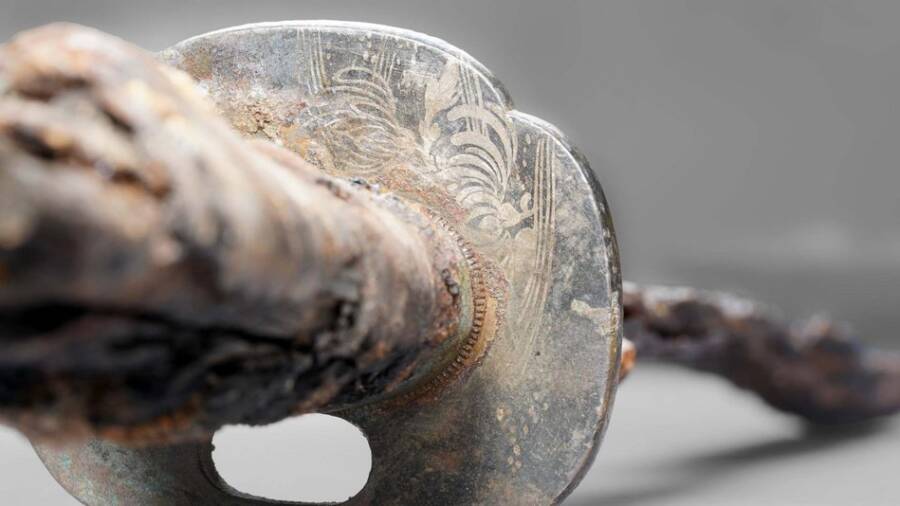
Anica Kelp/State Museums of BerlinThe ornate handle of the wakizashi.
A wakizashi was a 17th-century short sword carried by samurai in feudal Japan. The weapon was often paired with a katana and was used as a backup sword for fighting in close quarters. It was also sometimes used to perform seppuku, or ritual suicide by disembowelment.
Although the weapon’s handle was damaged, likely from heat, there were still traces of wood present on the sword, and some of its fabric wrappings were preserved. Researchers could also make out several designs, including motifs of chrysanthemums and the Japanese deity Daikokuten, one of the seven gods of luck.
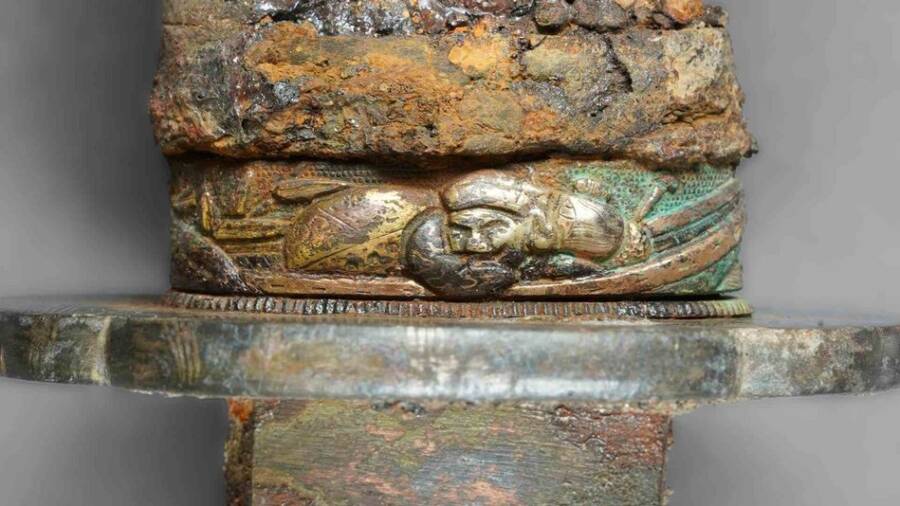
Anica Kelp/State Museums of BerlinA motif of Daikokuten, a Japanese god of luck, holding a hammer.
The researchers confirmed that the sword likely originated from Japan’s Edo period (1603 to 1868), but it could be even older. The blade had obviously been shortened, so researchers are missing important information about its original form that would be helpful for more precise dating.
They are also missing information about how the Japanese weapon ended up in Germany in the first place.
How Did The Wakizashi Find Its Way To Germany?
After the initial examination, researchers performed X-ray scans on the sword to uncover more about what lay beneath the wrappings and ornamentation.
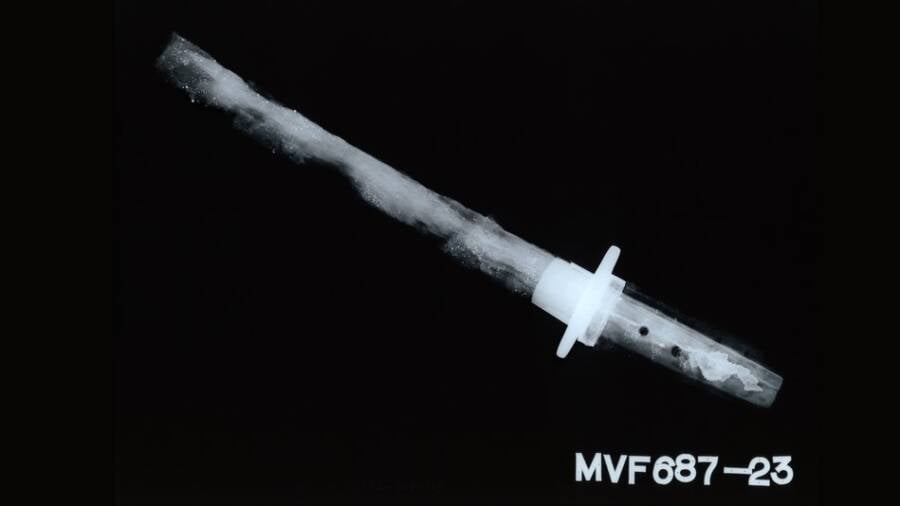
Anica Kelp/State Museums of BerlinAn X-ray scan of the sword revealed that it had been shortened from its original length.
Experts could not locate a marking from a blacksmith, but they did confirm that the blade had originally been longer. Thus, the handle was most likely not original, and the blade may be much older than the rest of the weapon.
So, how did this centuries-old blade end up in Germany?
Researchers have postulated that the sword was a diplomatic gift brought to Germany in the 19th century. In both 1862 and 1873, Japanese ambassadors traveled to Europe, and they may have brought the sword with them during either visit.
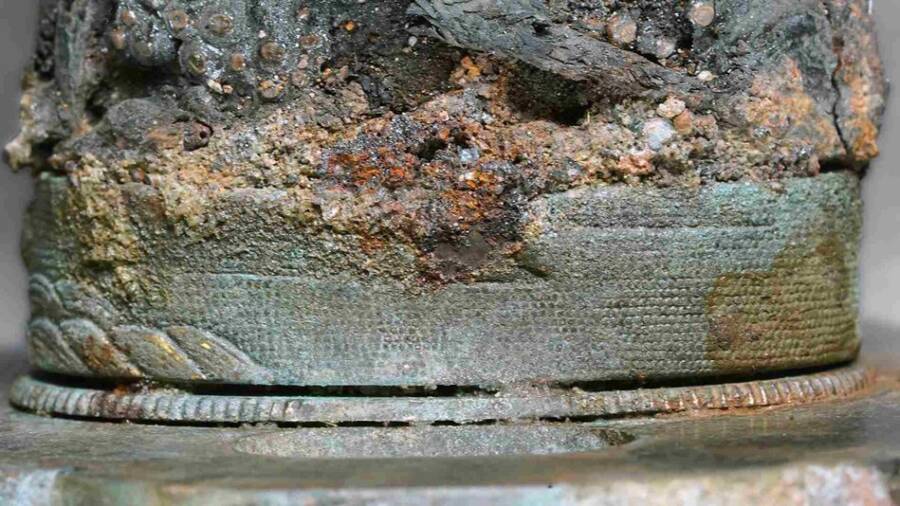
Anica Kelp/State Museums of BerlinA close-up view of the intricate design on the sword’s handle.
Indeed, Molkenmarkt is located near the Berlin Palace and other aristocratic households, which may lend credence to this hypothesis. However, researchers have been unable to find a connection between the Stralauer Street home’s former owner and any diplomats or German officials.
“This discovery shows once again what surprising objects are waiting to be discovered in Berlin’s soil,” said Matthias Wemhoff, the State Archaeologist of Berlin, in a press release from the State Museums of Berlin. “Who could have imagined that at a time when Japan was isolated and hardly any European travelers came to the country, such a long-used and richly decorated weapon would end up here in Berlin?”
After reading about the 17th-century samurai sword found in Berlin, go inside the story of Miyamoto Musashi, one of the most successful samurai of all time. Then, read about Jules Brunet and the true story behind The Last Samurai.





